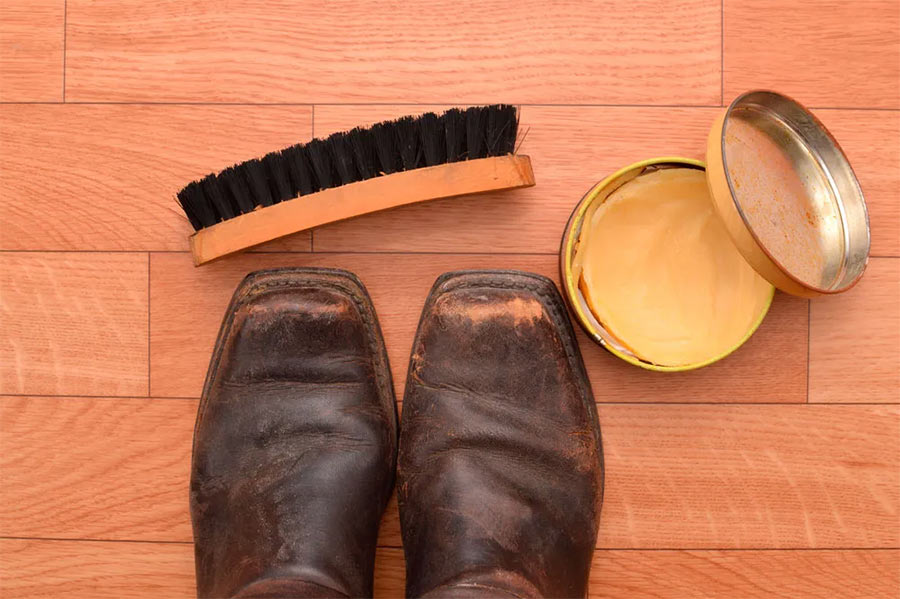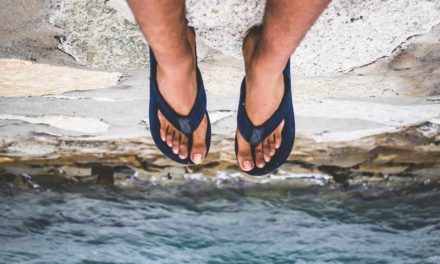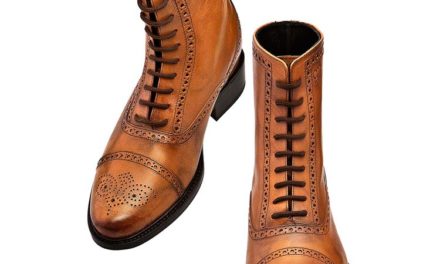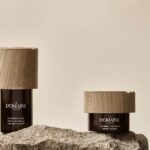Strictly functional cowboy boots were part of workwear for a century. However, the golden age of Western movies from 1940 through 1950 changed how regular people look at western wear. As cowboy boots were drifting into the fashion world, manufacturers fitted them with more and more fashion-driven features that allowed people to wear them for various occasions outside rodeos and cowboy shows. That meant wearing cowboy boots covered in dust and muck was no longer appropriate if one wanted to make a fashion statement.
The trend for Western boots cycles, and in 2022, they are on-trend again. Since western-inspired fashion aficionados are increasing in number, more and more people are asking how to clean cowboy boots. That’s why we’ve prepared this care guide, where we’ve broken down the process into easy-to-follow steps and supplemented it with some cowboy boot tips. Of course, it will also be helpful for horseback riders and other people who use cowboy boots as work boots. Enjoy reading.
Before You Start Caring
Shoes made with leather boast an outstanding durability potential, which can be unlocked only with proper care. Otherwise, boots will quickly get covered with splits and cracks. Considering that western footwear, such as Twisted X, Ariat, Justin, or Corral boots, are a serious investment, you want them to last for years.
Before actually wearing your new boots in the street, you need to break them in, as you would your regular leather shoes. The easiest way is to wear them with a second pair of socks around the house or on short strolls. It will force the leather to stretch and mold your feet.
Cowhide leather is a common material for cowboy boots. So here are six steps to general care. Then, we’ll tackle how to take care of more uncommon materials.
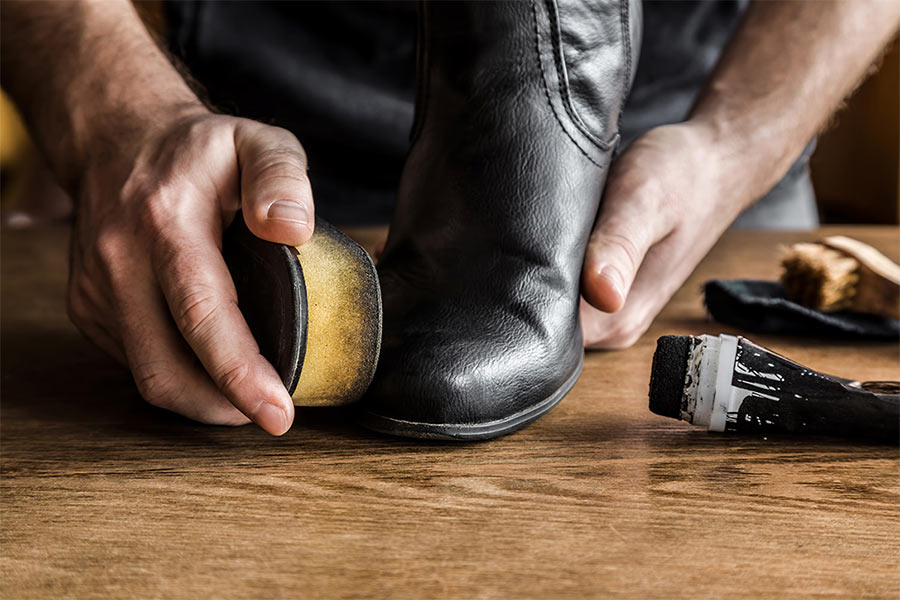
Cleaning
You must clean your boots each time you wear them. Dust, mud, manure, and debris left to dry on the boot, cowhide or exotic animal skin, will weaken the leather and cause damage. Wipe out the boot shaft and vamp using a damp soft cotton cloth or soft bristle brush. Apply a damp sponge to heavy mud on caked areas, and don’t be shy to make a little extra effort to remove stubborn stains.
Whatever fouling you deal with, never use industrial or household cleaners, solvents, or gasoline. Soaking and washing boots in heavy running water aren’t recommended either. Instead, look for a proper boot stain remover and a manufacturer’s recommended leather boot cleaner.
After you’ve removed dust, mud, and other foreign debris from the boot’s top, heels, and soles, wipe out any excess water with a soft dry cloth and allow the room air to dry them.
Conditioning
This step is vital because skins and hides naturally dry out over time, causing creases that transform into cracks. A good leather conditioner for boots will keep these materials supple. Let’s consider how to condition leather cowboy boots.
Your real-leather cowboy boots need to be clean and dry before you begin conditioning them. Apply a leather boot conditioner rubbing it over the surface in a circular motion using your fingers or a soft cloth. Remember that leather won’t take more than it can, so don’t use large amounts. Otherwise, the leather will get oily or sticky. Remove the excess conditioner with a clean, soft, dry cloth. Don’t use solvents, alcohol, and household cleaners because they dehydrate leather.
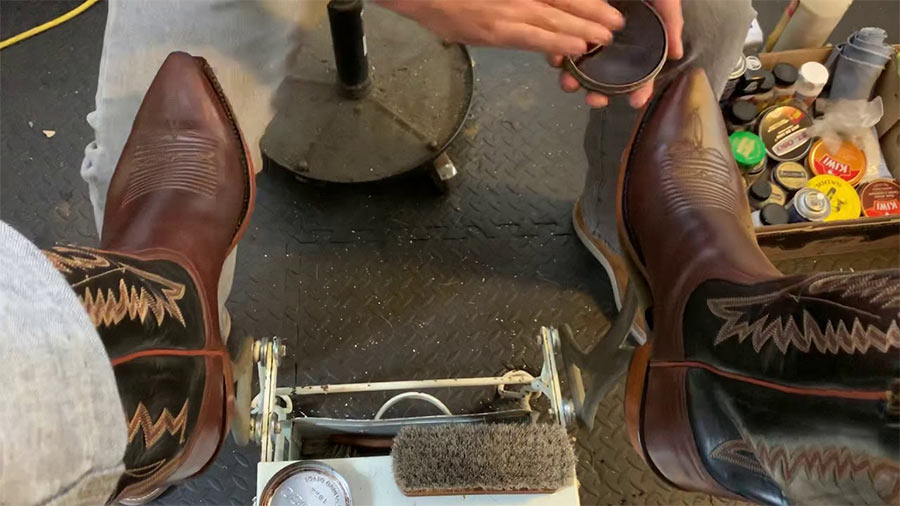
Polishing
So how do you polish cowboy boots to make them shine? Boot oil, wax-based, and liquid brush-on polishes have been used for decades, but though they did their job well, they caked on the surface, preventing the leather from breathing. Therefore many western boot brands advise using cowboy boot cream. Leather willingly absorbs it, and excessive amounts can be wiped out easily. Thus, the caking issue is eliminated, and the boots are shiny and can freely breathe.
Boot creams come in various colors, and if your boots are hard to match, you need a neutral boot cream. Some boot creams may also contain conditioning agents. Apply the cream in thin layers using a soft cloth or your fingers. Don’t forget to treat the edges of the heel and sole.
Protecting
If you want your boots to live through the ages, don’t wear them into water, manure, and dirt. If your intended use implies all these, you should clean them from foreign substances using a soft brush or cloth as soon as possible. Remove excess water with a towel and leave them dry at room temperature. Don’t do anything to speed up the drying process: don’t put the boots near a fireplace and in the sun or use a hairdryer.
You can also waterproof your cowhide boots with a polymer (silicone) spray designed for use with leather. Spray it from a distance of a foot and let it dry for half an hour. Apply a second layer for added protection. If you live in a moist and humid environment, reapply the spray every three months.
Rejuvenating
Your boots will inevitably become scuffed and scratched from normal wear. In this case, you want to apply wax or boot cream to refresh. Remove excess wax/cream and repeat the procedure until you match the damaged area to the rest of the boot.
Pay attention to the lower portion. Make sure to repair and replace heels and soles once you notice holes and cracks because they will destroy the boot’s foundation if neglected for too long.
You may try a leather saddle soap if your old boots are already in poor condition from improper care. Use it only when there’s no other help because saddle soap on boots removes the designed finish and makes leather dull when applied regularly.
Storage
Store your boots clean and dry. Wet boots, put in an enclosed space where moisture can’t freely evaporate, may eventually suffer from discoloration, deterioration, and mold. Condition and polish your footwear before putting it away. Choose a cool, dry place where they won’t be exposed to sunlight and heat. Use a boot tree to retain the shaft’s shape.
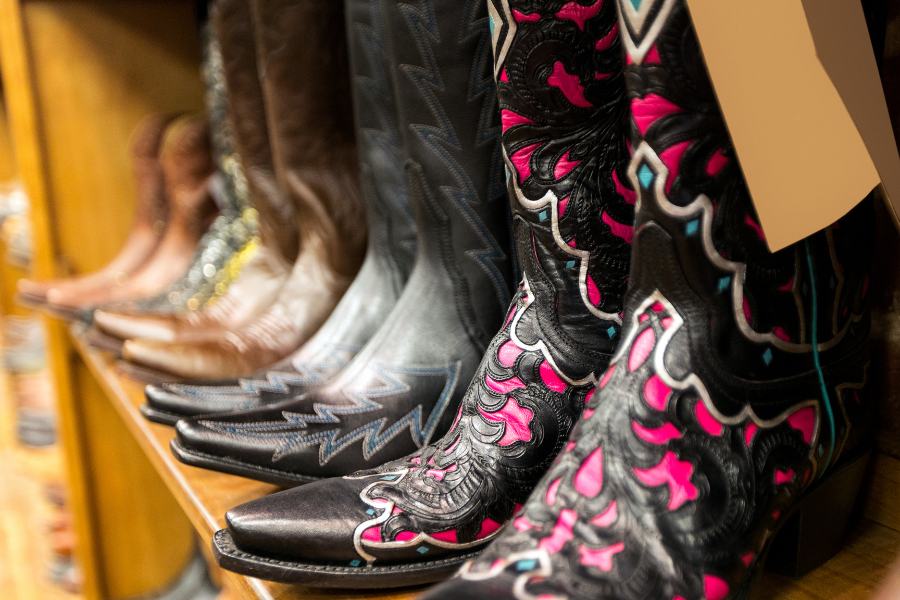
Bonus: Less Common Boot Materials
How to Care for Exotic Western Boots
Boots made with alligator, crocodile, lizard, or eel skin require conditioning each week being worn. When storing exotic boots for extended periods, apply a boot conditioner (lanolin-based conditioners work the best) or boot cream 3-4 times a year. Try to avoid wearing gator/croc/lizard boots in extremely wet weather.
Now how to take care of cowboy boots made with snake skin (python, rattlesnake, cobra)? First, you need to use a reptile spray foam cleaner and conditioner. It will gently lift the dirt and debris from the scales. Wipe and clean scaled boots only with the natural scale grain, not against it.
Suede and Distressed Leather
To keep your distressed leather cowboy boots the way they were designed, you need to use neutral color boot cream. Suede cowboy boots are cleaned using a suede brush or a dry terry cloth.
Decorations
Laser inlays in leather cowboy boots are cleaned the same way as the rest. However, you shouldn’t apply any cleaning, polishing, and conditioning agents to stitching and embroidery. Instead, use a damp cloth to clean these areas. Turn to a mixture of white vinegar and water to remove stubborn stains.

